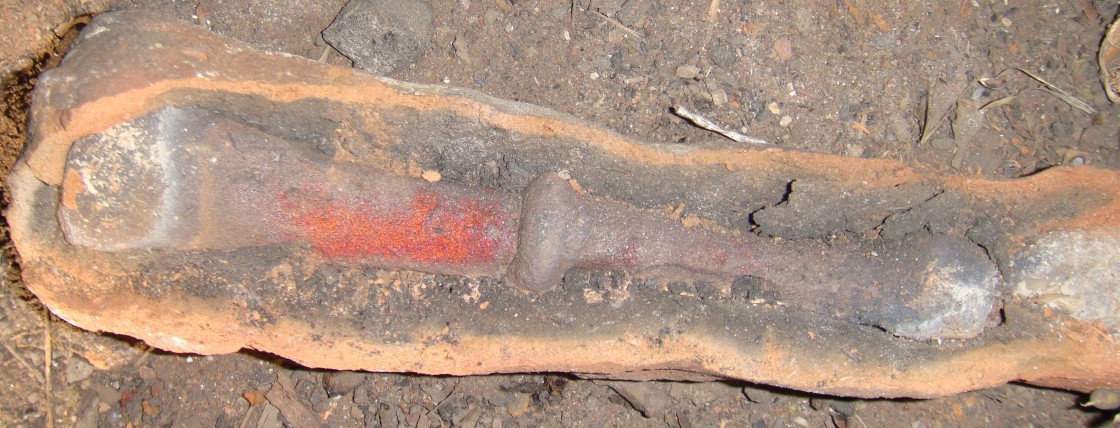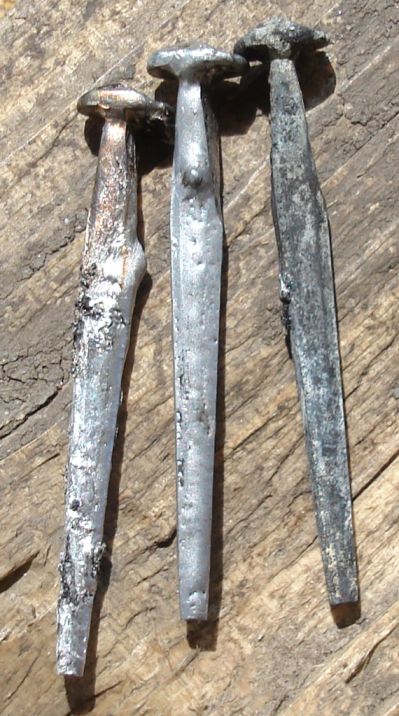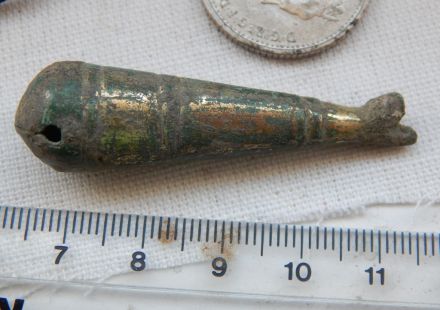Something I’ve been wanting to try since last year is casting into powder to make small objects, which is an interesting thing to test for real experimental archaeological reasons. This is done by following the instructions of Biringuccio in his Pyrotechnia (published in the 1540’s). (page 324 for the powders, and 326 for the method for making up the boxes, of the Dover paperback edition)
The simplest way to do it for me was to make a wee casting box from sheet wood that I had lying around:
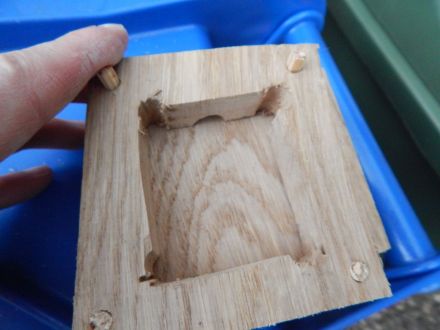
Note the dowelling rods to hold it together, and the fact that I carved the open parts out by drill and saw. This photo is of one side, with the outer piece of wood to hold the powder in, underneath the middle hollow bit.
It is big enough to make 1 large or 2 medium sized buckles, or some buttons or something. If I make it too big I’ll need lots of powder to fill it and it’ll be more of a pain to deal with. It is then bound together with string when ready to use, and you can see the pouring hole at the top, which will rapidly get burnt from the molten metal. Only I forgot the string, so held it together between two bricks when I was casting.
The archaeological aims are to see if it is possible to use the powders, and how well they do, and whether there are any obvious indications of such a method on the finished product, i.e. how much work would be required to finish it off, compared to my usual clay casting. Then there is the question as to whether the powder is damaged by the heat and thus forms a sort of ash or slag that can be identified or overlooked in a dig. It also seems to be an area of experiment that nobody else has tried, although I lack the language skills to tell if someone else abroad has done it before.
Now, the powders that Biringuccio says to use are quite varied, but you can immediately see that they are all heat resistant. Quote:
“Powders are also made of crushed brick, tripoli, vine ashes, tiles, and glazed drainpipes, or burned emery, calcined tin, straw, and of burned paper and horse dung as well as of young-ram’s-horn ashes and many other things. The goodness of all these depends on three things; namely on receiving the metal well, on being so fine as to be almost impalpable, and on their being made with a magistery that renders them hard and strong when dry.”
He also mentions another of two parts pumice and one of iron scale, pounded finely. The other powder he spends most words on is made from a burnt and pounded loam originally made from fine grained earth or gravel or river silt, mixed with wool cloth cuttings, spent wash ashes and horse dung.
This last one is a little time consuming to make, so will be made later.
This post is about the use of calcined tin, which was some purchased from a chemical supplier, and of a fine, floury consistency. Biringuccio above said to add a magistery to them, by which he meant the magistery of salt. Fortunately I tried burning salt in a silica rich environment last year, so added some salt solution made from that salt. (More on the magistery of salt in another post)
Now, onto the trial.
Making up the bronze to be cast was simple enough, so I will ignore that.
Instead, the interesting and complex bit was making the mould to cast into. Firstly, I made the tin oxide damp with the magistery of salt solution, but it ended up a bit lumpy. I tried pressing it into the mould, which was easily enough done, but it was never of a smooth consistency. Ultimately, when I was trying to press the buckle into it I came to the conclusion that I should have dampened it a lot more. Biringuccio wrote:
“…that has been slightly moistened for moulding, as I told you, so that by pressing with the ends of the finders and with the hand it holds together as well as possible.” (Page 326)
But there is a fair bit of room for error here, I think it holds together at a wider range of dampness than the actual wetness that would make the moulding turn out best.
Nevertheless I soldiered on. The first photo shows the buckle on the powder:
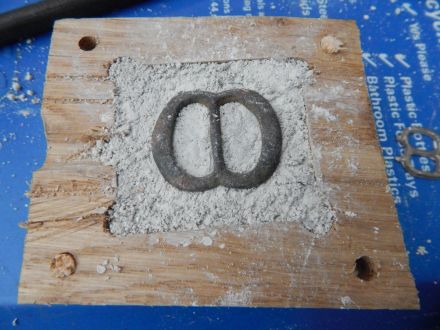 Continue reading →
Continue reading →

